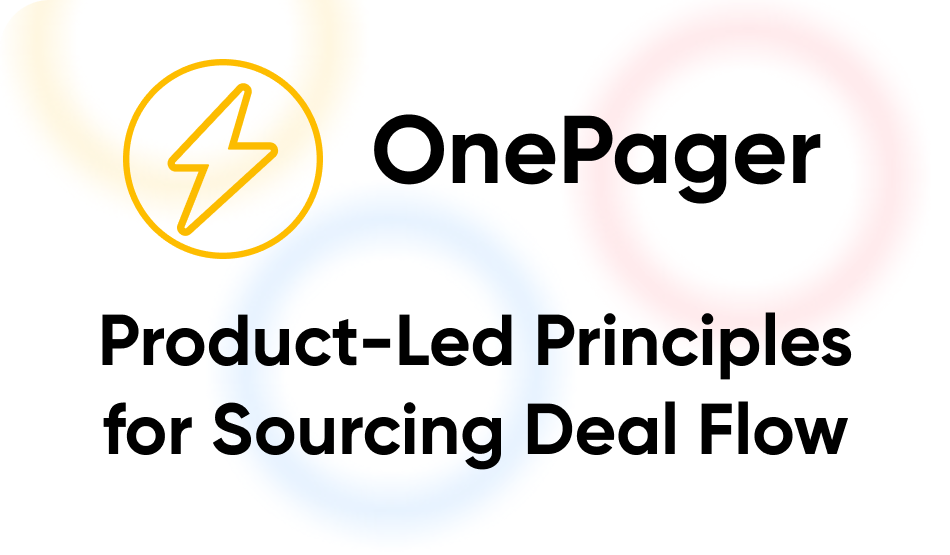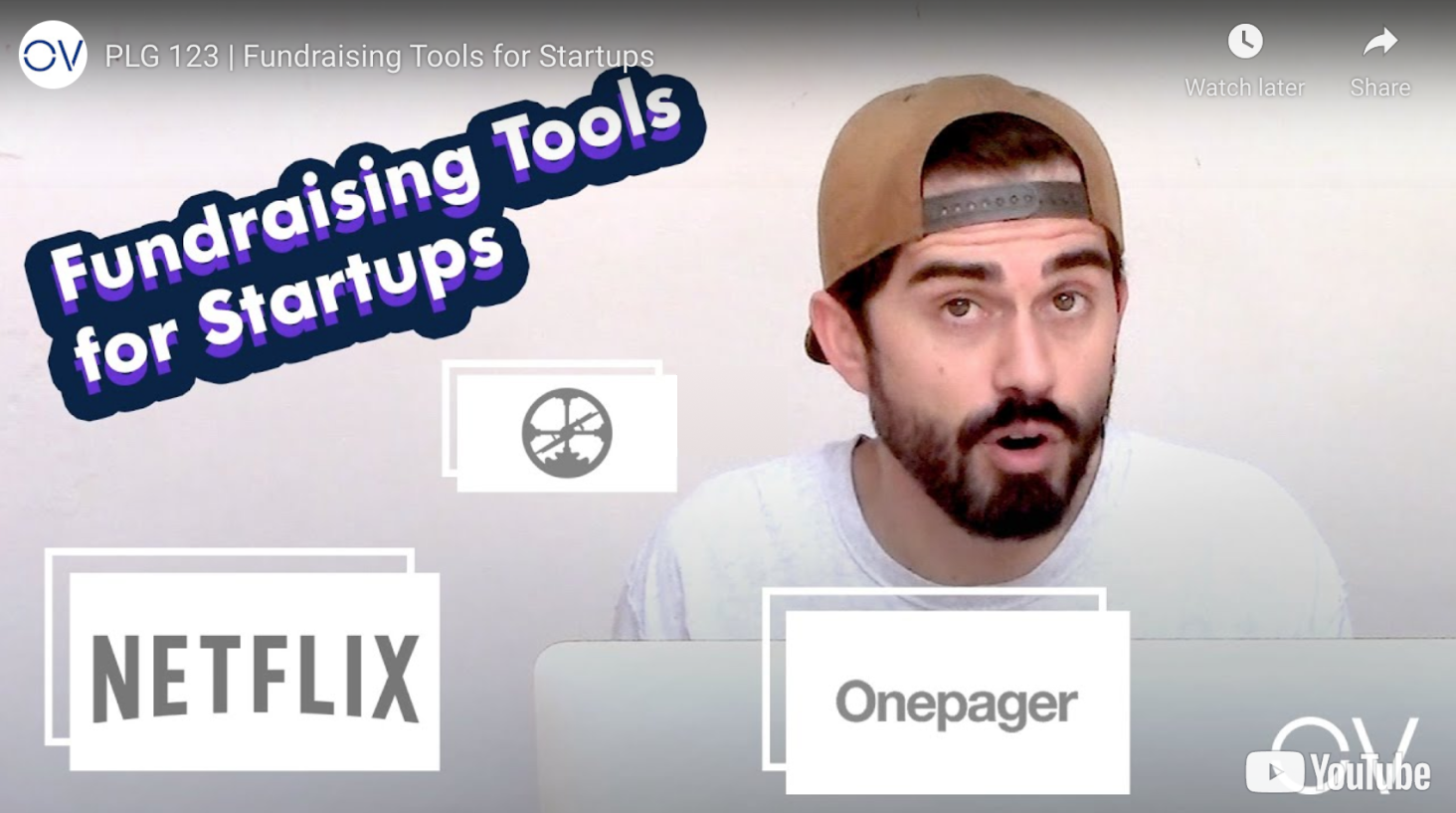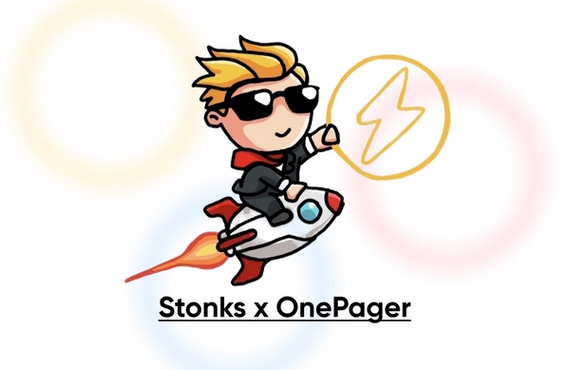Product-Led Deal Flow

Nic Mahaney
Prev. OnePager Co-Founder
November 10th, 2021

Over the last decade, the term product-led growth, or PLG, has been used by Blake Bartlett (OpenView Venture Partners) and others to describe growth strategies for some of the world’s fastest growing software companies. But what is PLG and where did this strategy come from? Similarly, how can these same principles be applied to other industries? In this blog, we’ll review what product-led growth is and how the team at OnePager is applying PLG lessons in the venture investing world with “product-led deal flow”.

Product-Led Growth
What is product-led growth?
Product-led growth is a business strategy for leveraging your core product to acquire, activate, and retain customers. In simpler terms, PLG flips the standard sales cycle on its head by removing the need for multiple meetings, white papers, and a handheld onboarding process. By adopting product-led growth, every department within a company influences the product. Co-founder & CEO of Klipfolio, Alan Wille, thinks of it the same way:
Your marketing team will ask, “how can our product generate a demand flywheel.” Your sales team will ask, “how can we use the product to qualify our prospects for us?” Your customer success team asks, “how can we create a product that helps customers become successful beyond our dreams?” By having every team focused on the product, you create a culture that is built around enduring customer value.
In the current software climate, one of the primary drivers in failing businesses is that customer acquisition costs (CAC) are very high. Whether that’s paid advertising or customers driving longer sales cycles, it takes a lot of money to get users. Among other things, PLG drives down CAC because advertising, prospect maturity, and more are built into the product experience.
What are examples of PLG?
Dropbox - Probably the most famous example of product-led growth comes from Dropbox. Looking at Dropbox’s PLG strategy, we can break down their success to two core efforts. First, Dropbox created an incredibly intuitive product. This reduces the need for a large customer success team or product manual to mature users - the product helps users teach themselves. The second way Dropbox leveraged product-led growth was their referral program. Dropbox made a very clear and obvious push for their users to invite friends and colleagues to join Dropbox. In exchange, users would be granted more storage as they used the product - driving new sales and improving the existing customer experience.
Slack - While very different in strategy, Slack is another well-known example of using PLG effectively. Slack as a core offering is great - it allows you to contact anyone and everyone in your organization from a single location. Because of this, every user receives more and more value from the product as more user’s join their organization. This is called a network effect and it can lead to quick, exponential growth for a software within communities.
Why is PLG important for companies?
According to Blake Bartlett and the team at OpenView Venture Partners, product-led growth can be broken down into three pillars: designing for the end user, delivering value upfront, and investing in growth principles early. These three pillars will not only assist in building a great end user experience for any product, but will also assist in developing user knowledge as to how they engage and interact with the most important features in your product.
Product-Led Deal Flow
What is product-led deal flow?
Product-led deal flow, or PLD, is the practice of applying the same principles of product-led growth to driving high quality investment deal flow. By building products that address core pain points in the fundraising process, substantial deal flow will be sourced as a byproduct of solving these issues. In a similar fashion to reduced reliance on sales and customer success teams for maturity through PLG, product-led deal flow reduces the need for associates to source deals manually - these tools can leverage network effects to have natural, inbound deal flow.
How is OnePager leveraging PLD?
OnePager is an incredible tool for fundraising founders. By building a tool for sharing and updating company/team info, pitch decks, videos, FAQs, metrics, and more, with privacy settings and analytics built in, we are providing an incredible amount of value to founders. As a standalone product, with almost no marketing, we have had nearly 5,000 companies use the tool in just over a year. For investing, this leads to organic deal flow (from a cold start) that will compound upon itself to drive more and higher quality deals. Similarly, this is a clear proof of value for founders that our team can build products and can help them in the process of building products.
Product-led deal flow can be a huge differentiator for investors in a few ways. The largest reason, however, is that with a large amount of capital pouring into the market over the last few years, investors are held to a higher standard of bringing more value than a check. Through product-led deal flow, you already prove your worth as an investor by solving some particular pain point for founders. For us, we do this through fundraising OnePagers and our Investor Day newsletter, where we share fundraising companies with 1,000+ investors. As we begin to enter the world of venture investing, product-led deal flow will be a major driver for how we source deals and differentiate ourselves from other investors.


